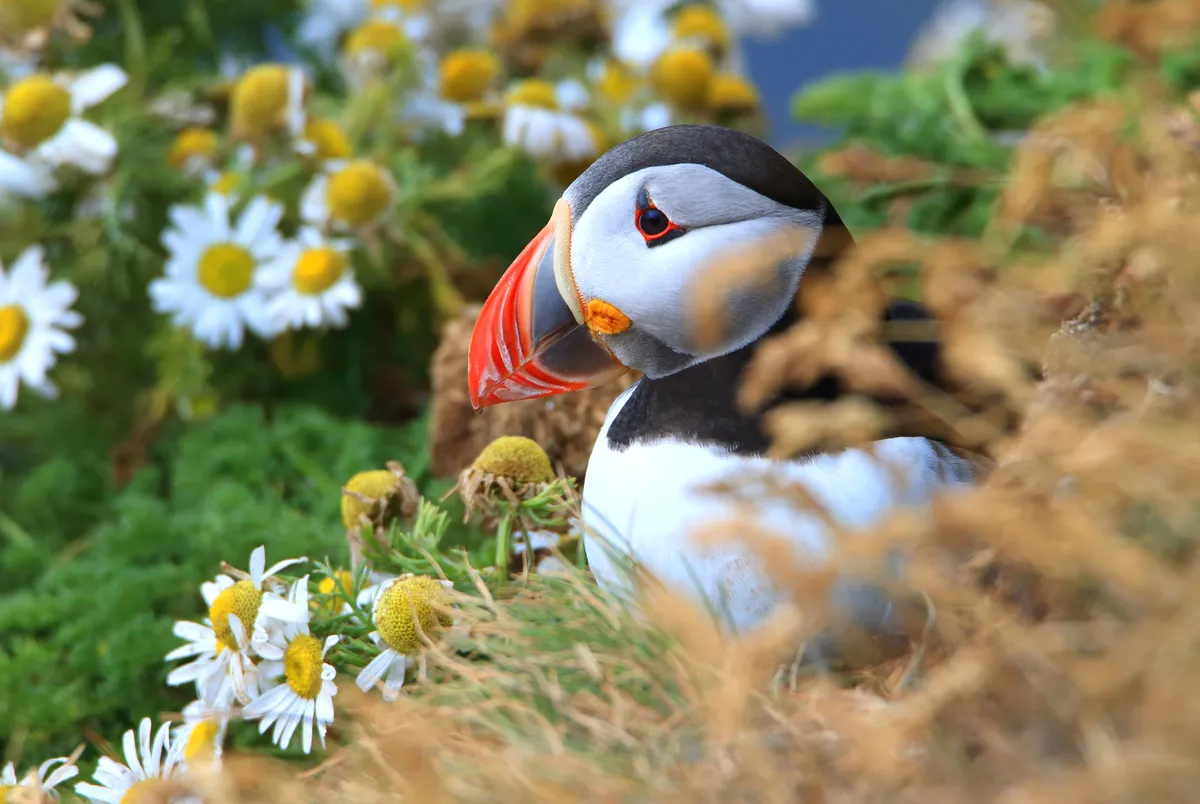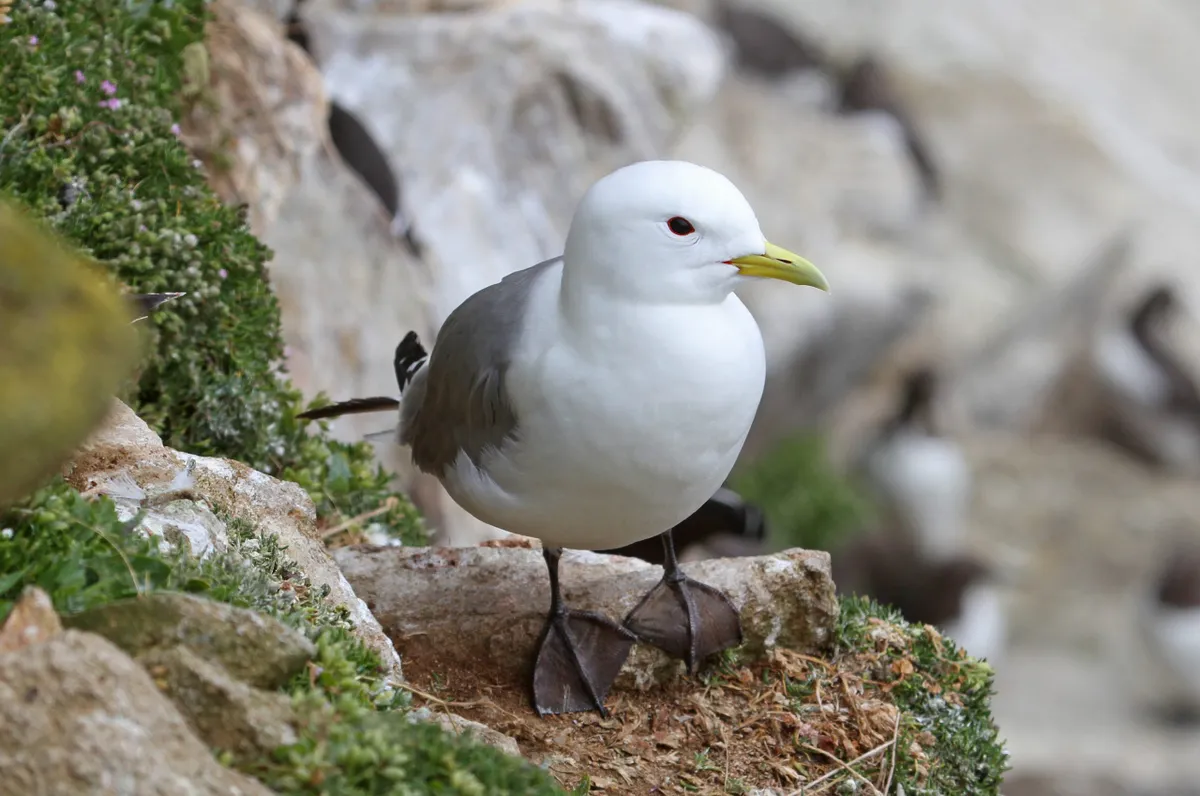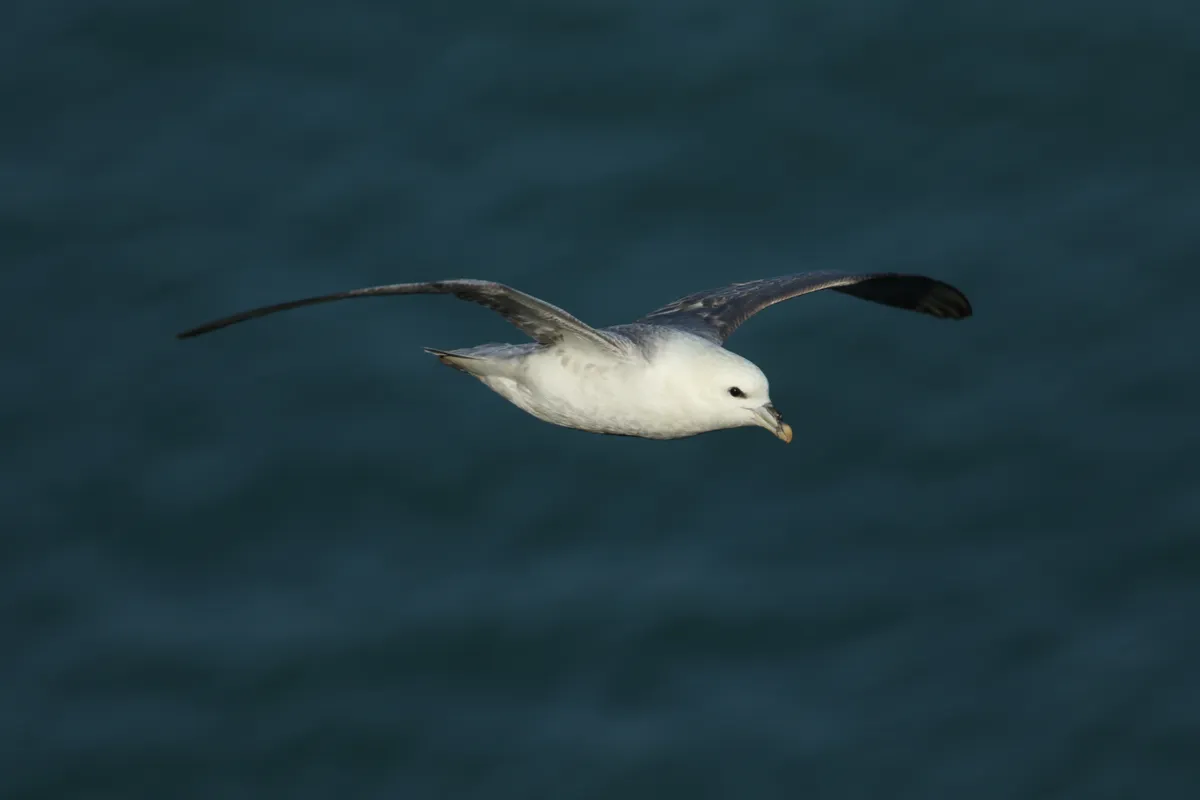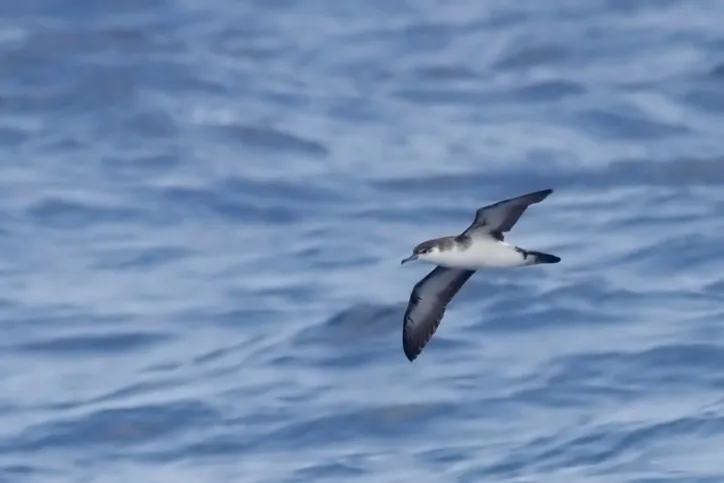British seabirds come in all shapes, sizes and colours. Some can be seen all year round along our shores, while other species are migrants, arriving in spring to breed for the summer months, before leaving again in autumn.
Some of our seabirds are large and others small; some rare and some common; and some are colourful and showy, while others have adapted to blend in with their surroundings.
Here, we take a look at some of the most common seabird species in the UK, including puffins, gannets and guillemots.
What are Britain's most common seabirds?
The British Isles is home to 25 species of breeding seabird – eight in Ireland and 18 in Britain. But many more (that breed elsewhere) may also be seen. Here are some of the most common:
- Puffin
- Guillemot
- Razorbill
- Kittiwake
- Fulmar
- Northern gannet
- Manx Shearwater
- Shag
- Common tern
- Great skua
- Black guillemot
- Great black-backed gull
- Little tern
Quick look at UK sea birds
Puffin (Fratercula arctica)

The colourful beak is the giveaway. The puffin nests in burrows on clifftops and islands and rears a single ‘puffling’ on beakfuls of sand eels. Its wings whirr like a clockwork toy in flight; on land the puffin waddles endearingly.
Guillemot (Uria aalge)
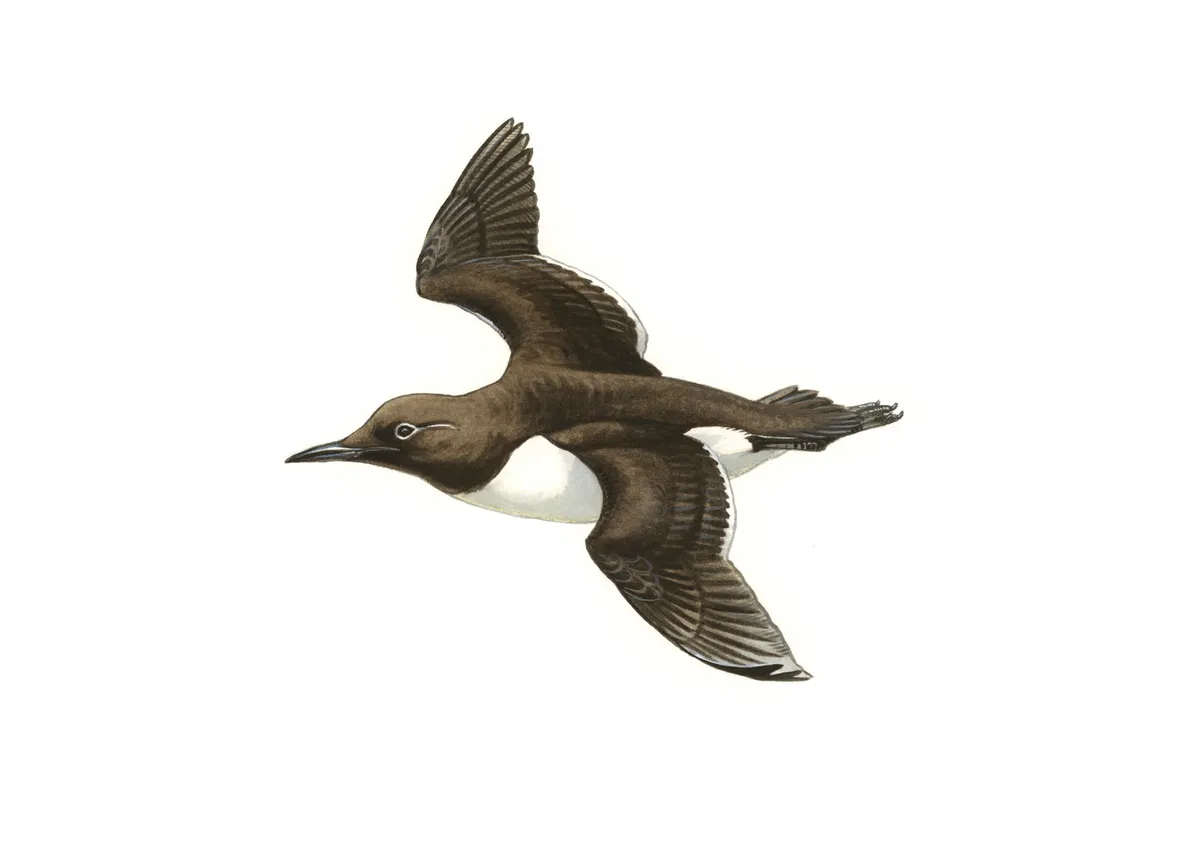
The most numerous inhabitant of seabird cities, nesting on the tightest ledges. Dapper dark-chocolate-brown and white plumage. The smaller, scarcer black guillemot has only small patches of white on its wings, and scarlet legs.
Razorbill (Alca torda)
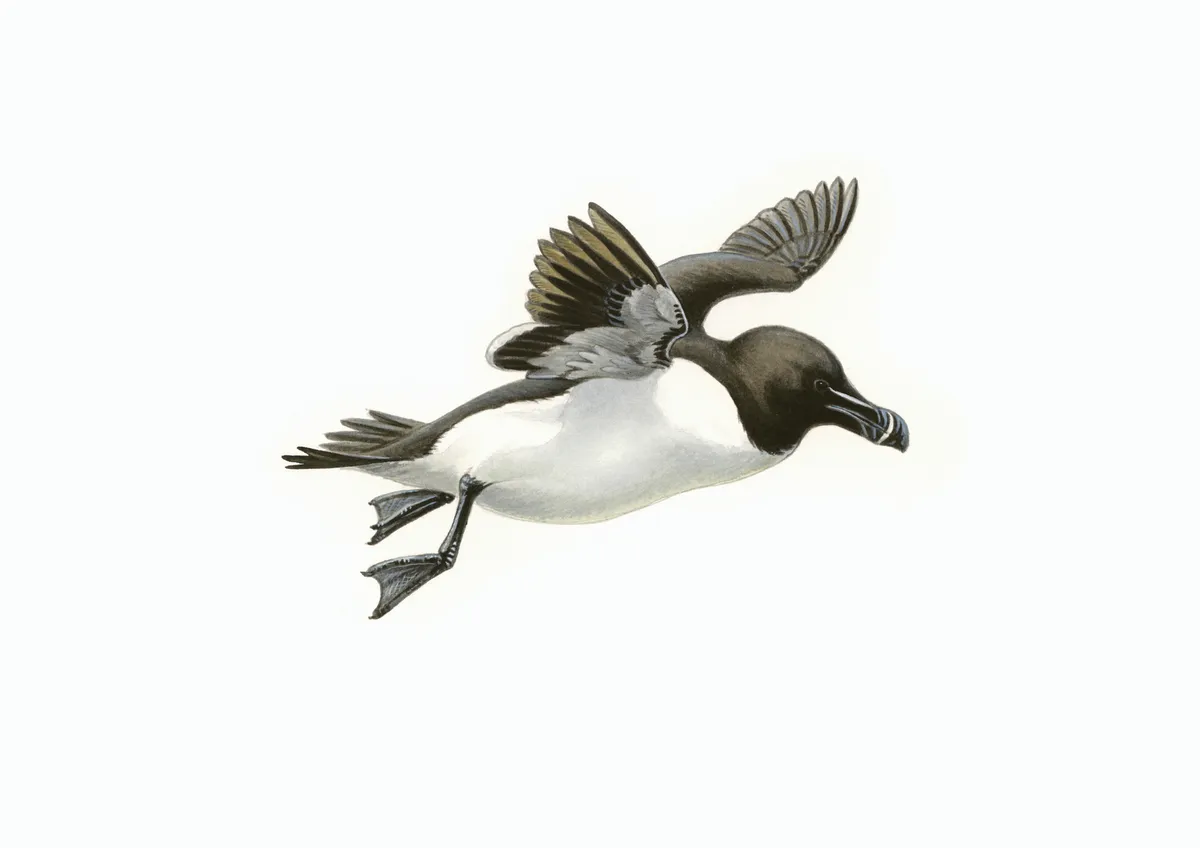
Similar to the guillemot but with blacker plumage, and a far heavier beak with a thin white stripe. The razorbill is found in more northerly regions and nests in crevices and on ledges among rocks at the bottom of cliffs. It is a very deep diver.
Guide to Britain's auk species
There are five species of auk in the UK, including puffins, razorbills, black guillemots, guillemots and little auks. Learn how to identify these distinctive seabirds as they return to land in March and April to breed.

Kittiwake (Rissa tridactyla)

A delicate gull with snow-white plumage and grey upper wings with black tips. Unlike many of its relatives, it has a soft cry of a call. Rarely seen inland, it nests on ledges all around the UK. It makes shallow dives for fish and crustaceans.
Fulmar (Fulmarus)

Britain’s albatross, this stiff-winged glider soars effortlessly on the updraft of cliffs. Superficially resembling a gull, the fulmar nests in loose colonies on cliffs. Its bill has tubes through which it can shoot a foul, oily substance at attackers.
Northern gannet (Morus bassanus)

An elegant gliding ‘cross’ in flight but transforms into a bolt of lightning when it spots prey in the water below. Nests in huge colonies, turning islands white with birds and guano. Particularly susceptible to being caught in plastic pollution.
Gannet guide
The sight of hunting northern gannets plunging into the sea at speed is one of the greatest natural spectacles in Britain. Learn more about the dramatic lifestyle of our largest seabird.

Manx shearwater (Puffinus puffinus)

Glides low over the water, this dark, stiff-winged ocean wanderer makes the most of every uplift from the waves below. Vulnerable on land, so it returns to its nesting burrows under the cover of darkness to avoid a multitude of predators.
Shag (Phalacrocorax aristotelis)

A smaller, blacker, more seagoing relative of the cormorant with an emerald eye and a greenish sheen to its plumage. Nests among the colonies of other seabirds. The word ‘shag’ is an ancient word for ‘tufted’ and refers to the bird’s crest.
Common tern (Sterna hirundo)

The common tern is a summer visitor to coasts but also reservoirs and gravel pits. A slender, elegant gull-like bird with a long, orange-red bill. It dives frequently in search of small fish. Very similar to the Arctic tern, which breeds in more northerly locations.
Terns of Britain
Arctic terns, common terns and little terns grace Britain’s shores in the summers months. Learn how to identify them – and other tern species – with BBC Countryfile Magazine’s guide to terns.

Great skua (Stercorarius skua)

Pirates of the summer skies, the skua dive-bombs smaller birds to steal their fish catches as well as raiding nests for eggs and young. It varies in colour from pale to dark brown.
Black guillemot (Cepphus grylle)

An elegant little bird with bright red feet and white wing bars on an otherwise totally black body. Unlike its cousins’ seabird cities, it nests singly or in groups on rocky coasts, sometimes on harbour walls.
Great black-backed gull (Larus marinus)

Our largest gull has a ‘haughty’ look to its eye. Its plumage is much darker than the lesser black-backed gull and it is a more formidable predator, able to take adult seabirds and swallow them whole.
Little tern (Sternula albifrons)

Far scarcer than its common and Arctic cousins, the little tern has a yellow bill rather than red. It nests in small scattered colonies on shingle and sandbars and is easily disturbed by dogs off leads.
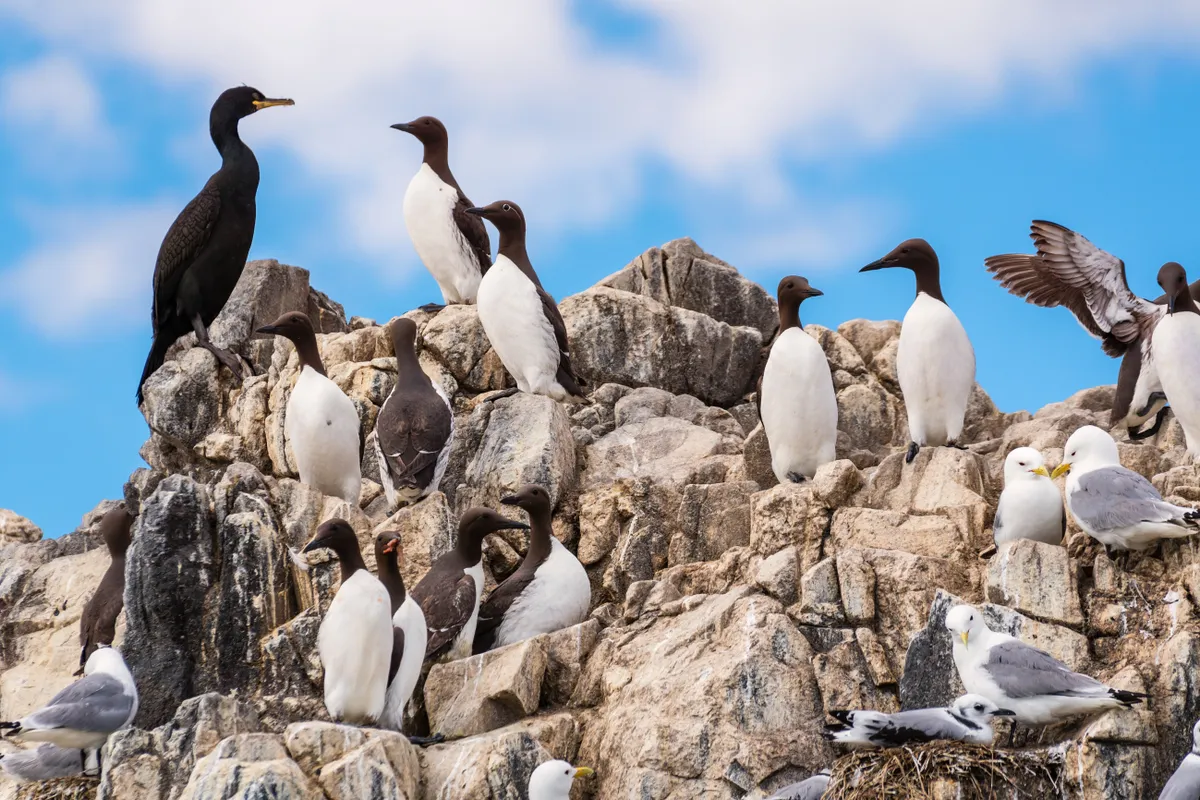
What is a seabird?
Many bird species live on or near the coast. Wildfowl, for example, are often found on estuaries or coastal marshland, and ravens, doves and kestrels regularly make use of sea cliffs. But they aren't true seabirds. Seabirds are birds that rely, at least most of the time, on the ocean to survive. Their bodies are adapted to the marine world.
In recent years, and largely due to human-induced environmental changes, some species of seabird – including cormorants and a number of gull species – have adapted to life away from the sea. These species are still regarded as seabirds.
Threats to British seabirds
By far the biggest threat currently to seabirds is Avian Influenza, which is decimating bird numbers around the UK coastline. With climate change and overfishing reducing their food stocks – not to mention humans and their dogs disturbing their nests – it's harder than ever for sea birds to reach adulthood and breed. But you can still find teeming colonies on our coasts. Just remember to keep dogs on a lead and to avoid getting close.
When is the best time to see seabirds?
Seabirds can be seen throughout the year along Britain's coastlines – but at certain times of the year the number of both species and individuals is considerably higher. In June, most seabird chicks are feeding, making it the best month to view some of our favourite species, including puffins, gannets, shags, cormorants, kittiwakes, terns, guillemots, razorbills, eiders and gulls.

Where are the best places to see seabirds?
Flamborough Head, Yorkshire

The name Flamborough is thought to come from ‘Flaneberg’, possibly from the Saxon word flaen meaning an arrow – which when you look at the area on a map it certainly resembles. It is a promontory of eight miles on the Yorkshire coast and Britain’s only northern chalk sea cliff. It is famous as a nesting site for thousands of seabirds and, as the most easterly headland in Yorkshire, it is a great spot to see migrating birds too.
Lunga, Inner Hebrides

The remote Scottish island of Lunga has a population of zero – or thousands, depending on whether you are a human or a puffin.
This beautiful slice of the Inner Hebridean archipelago, described as “a green jewel in a peacock sea”, has been deserted since the 1850s, but each summer it plays host to a huge colony of one of the most charming British birds of all: the Atlantic puffin.
St Abb's Head, Berwickshire

Raucous seabird colonies, ancient grassland rich in rare plants and butterflies, a sheltered freshwater lake with wildfowl and dragonflies – there’s so much to discover at St Abb’s Head. In late spring and early summer, the rugged headland is home to thousands of guillemots, razorbills and kittiwakes.
Skomer Island, Pembrokeshire
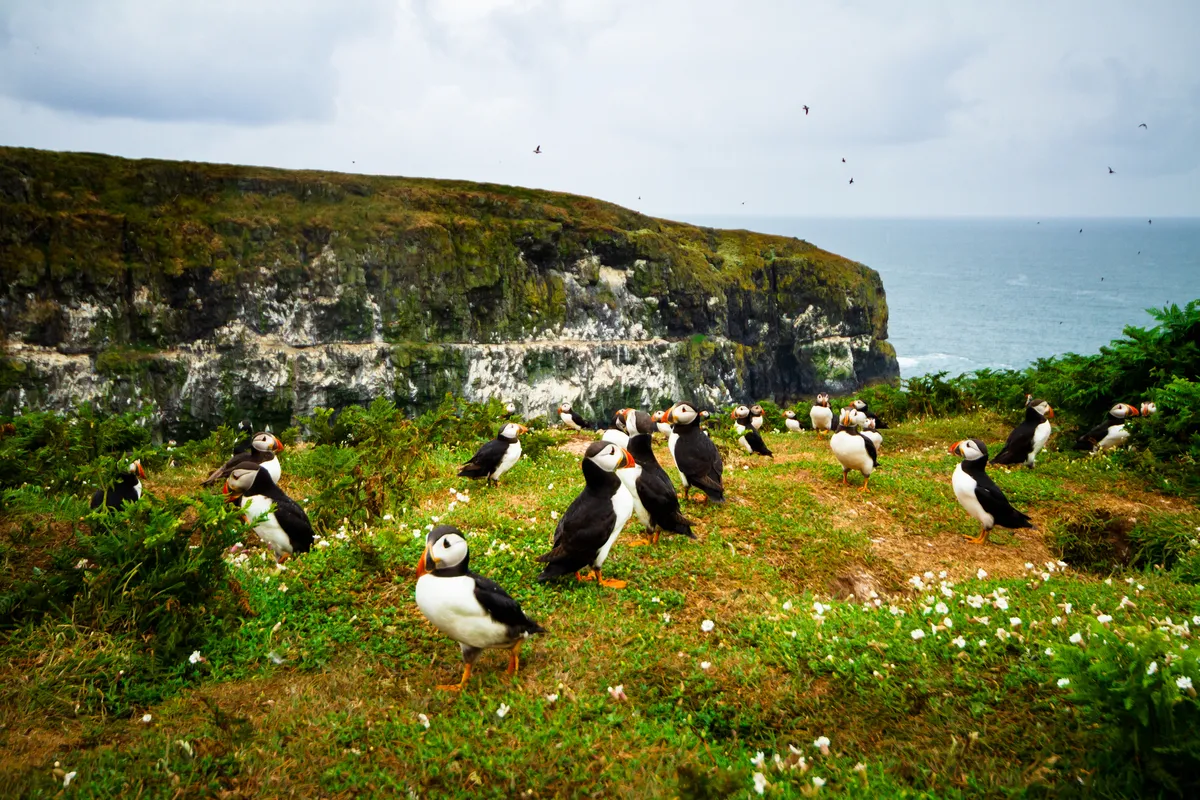
A protected National Nature Reserve since 1959, Skomer Island is one of the most important wildlife sites in Europe. In one day you can see puffins, grey seals, rare wild flowers, stunning views and much more. It’s a birdwatchers paradise, but if you’re still getting to grips with your guillemots and gannets, then there’s no better place to learn.
Farne Islands, Northumberland

From May to July, the Farne Islands and surrounding mainland cliffs resound with the cries of thousands of breeding seabirds, such as puffins, guillemots and little and arctic terns. You may also see atlantic or grey seals, thousands of which breed here every year.
St Kilda, Outer Hebrides

In spring and summer, 17 species seabird come to St Kilda to breed. the archipelago is home of the largest colony of northern gannets in the world and the greatest population of Leach’s storm petrels in Europe. St Kilda contains the most westerly islands of the Outer Hebrides, making it a tough place to reach – a factor that no doubt appeals to the many thousands of birds to nest there.
Portmuck, County Antrim

The productive waters that surround Portmuck, or the Isle of Muck, just off Northern Ireland's Antrim coast make it an ideal place for seabirds to breed. In the summer, thousands nest on the cliffs including fulmars, shags, razorbills, guillemots and kittiwakes. You may also see gannets, Manx shearwaters, terns, divers and skuas.
Bass Rock, East Lothian
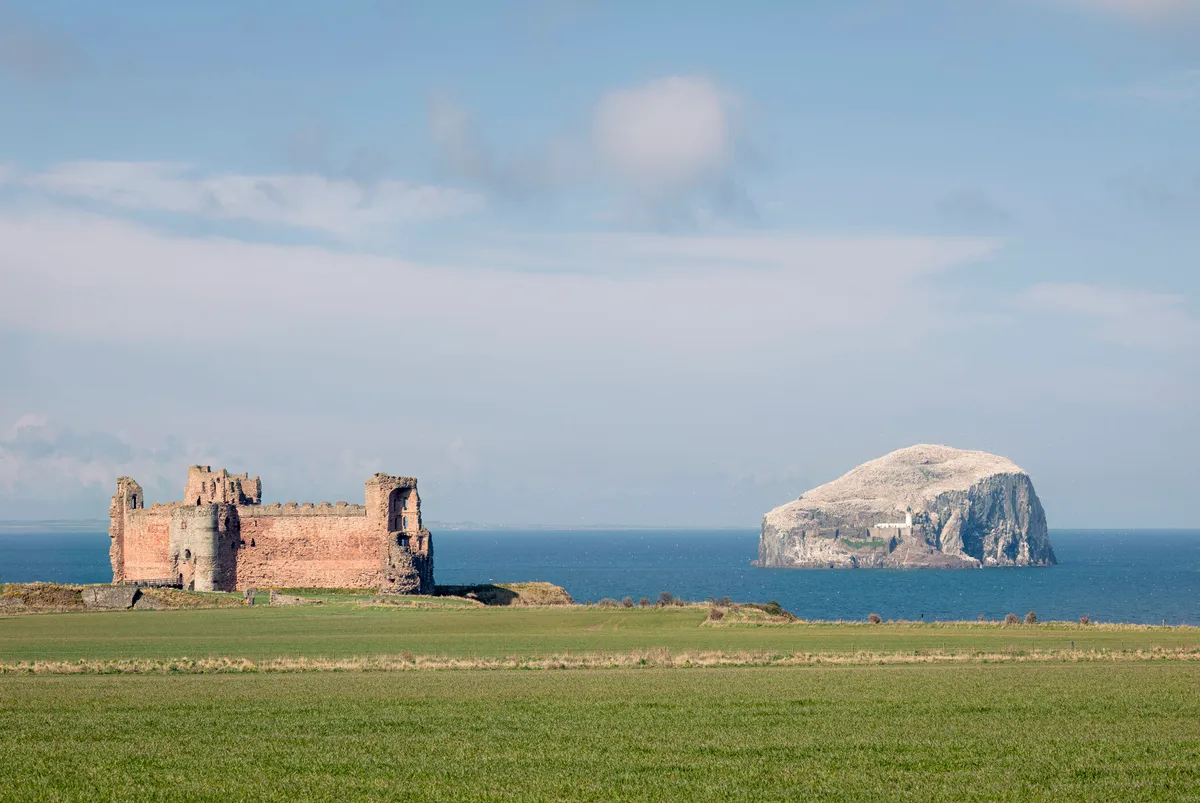
It’s late January, and after months at sea the world’s largest northern gannet colony is starting to return to Bass Rock. So copious are the seabirds that they alter the island’s complexion completely, the rock bleached brilliant white by a cocktail of snowy feathers and intoxicating guano.
Scotland is home to around a third of Europe’s seabirds, with numbers in the Firth of Forth rising to more than 500,000 in spring and summer when the gannets are joined by puffins, kittiwakes, guillemots, razorbills, fulmars and shags.
Handa Island, Highland

It’s spring, and the teetering cliff tops of Handa Island in Scotland’s remote north-west are a sanctuary for seabirds. Guillemots, razorbills, kittiwakes, fulmars and Arctic terns nest alongside the puffins and, by summer, the island reverberates with the sound of 100,000 breeding seabirds, one of north-west Europe’s largest colonies.
Interested in learning more about Britain's wildlife? Check out our guides to reptiles, oak trees, and dolphins and whales.
Main image: Puffins on Skomer Island/Getty
